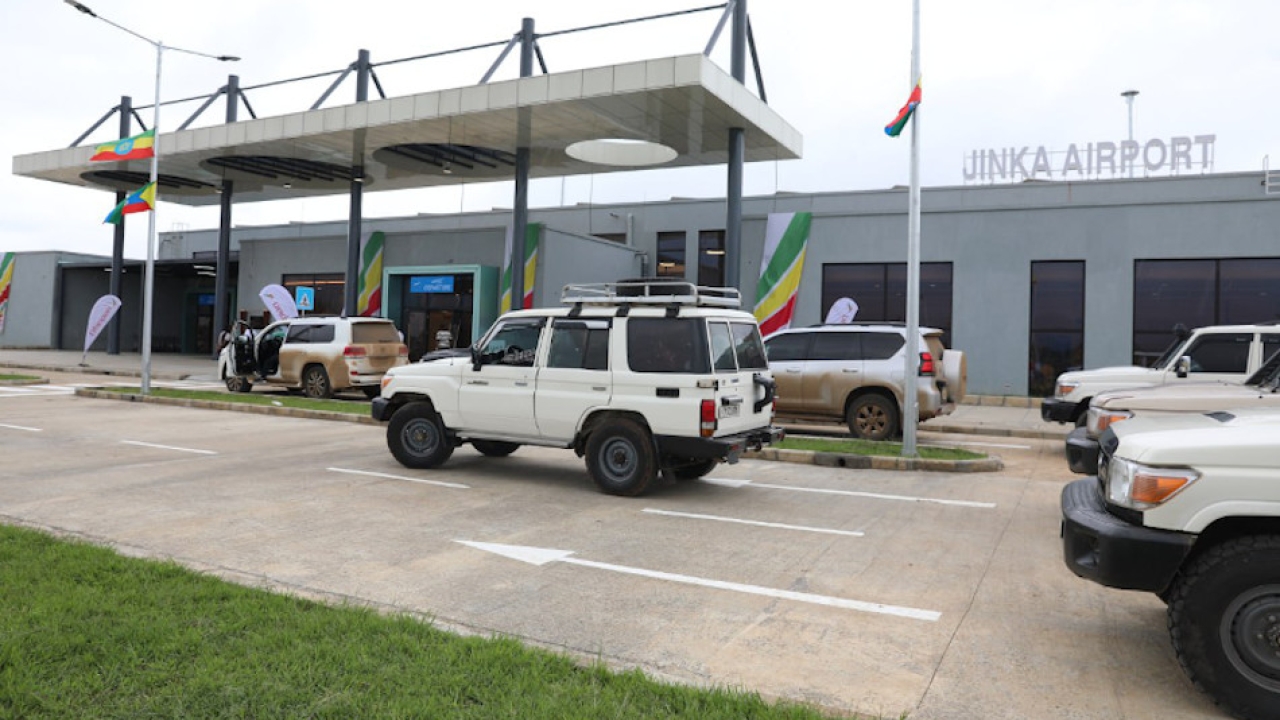Zambia's Copperbelt plan is belting along
The $397 million Copperbelt International Airport, being developed by the Zambia Airports Corporation Limited (ZACL), is now 35% complete. Humphrey Nkonde looks at the project.

ZACL has contracted Aviation Industry Corporation of China (AVIC) International to construct the airport 13km west of Ndola, the provincial headquarters of the Copperbelt.
The aerodrome is being constructed on a 2,000 hectare piece of land near where the second United Nations secretary general, Dag Hammarskjöld, died in a plane crash in September 1961.
It is connected by a paved road to the Ndola-Kitwe dual carriageway to Kitwe, a major mining town 36km west of the new airport.
Plans are under way to connect the airport by road to Mufulira, another nearby mining town on the Copperbelt, Zambia’s major mining region rich in copper, cobalt, gemstones and limestone.
The new airport will replace Ndola’s Simon Mwansa Kapwepwe International Airport, which started as a military base for the British Royal Air Force in 1938.
The old airport has served the Copperbelt and the north-western region from the 1950s.
Copperbelt International Airport will be able to handle large aircraft, such as the B747-800.
It will have a 3,500 metre code 4E asphalt runway, three aero bridges, eight aviation parking stands and a 132,000sqm double-deck terminal building linked to a viaduct.
Other facilities will include an air traffic control (ATC) tower, a business centre, aircraft hangar and a fuel depot that will hold one million litres of aviation fuel, on top of other ancillary amenities.
AVIC project manager, Su Zhiyi, confirmed in February that construction work was 35% complete.
He was accompanied on a media tour by AVIC officials and Simon Mwansa Kapwepwe International Airport manager, Joseph Mumbi, and other ZACL officials.
The contractor had finished constructing the apron at the time of the tour.
“The runway and taxiways are almost completed,” Su said. “Only the last layer of asphalt concrete surface remains to be applied on the runway and taxiways this year.”
AVIC has also begun constructing 15 individual buildings in the terminal area simultaneously.
“The structure of the ground floor and the first floor of the terminal building have been completed,” Su explained. “All the piling works for the viaduct have also been finalised.”
Additionally, 10 individual buildings, including the business centre, ATC building, special garage, water supply station, east and west aeronautical ground lighting (AGL) sub-stations and quarantine warehouse had been capped.
The Copperbelt international Airport’s additional facility, not present on a large scale at Simon Mwansa Kapwepwe International Airport, is the air cargo transit terminal.
It is expected that the new airport will have a capacity to handle a million tonnes of cargo per annum.
That is possible because air cargo destined for the Copperbelt and the North Western Province, dubbed the ‘New Copperbelt’ due to new mining activities, terminates at Lusaka’s Kenneth Kaunda International Airport and is moved by road.
Another advantage of the new airport in handling cargo is that it is about 20 minutes by flight to Lubumbashi in Congo’s Katanga Province, another major mining region.
The new airport is also strategically positioned between the Nairobi and Johannesburg aviation hubs and will serve as an ideal technical stop for aircraft flying between those hubs or to and from the Great Lakes region.
Construction of the new international aerodrome started on October 16, 2017 and is expected to be completed on October 16, 2020.
The Copperbelt’s new airport has become the second largest greenfield project from the time Northern Rhodesia, now Zambia, gained political independence from Britain on October 24, 1964.
The first was Kenneth Kaunda International Airport, formerly Lusaka International Airport, which was constructed in 1967.
Zambia has mobilised more than $1 billion, mainly through aid financing from China as loans to the Zambian Government for airport development.
The funds are for ZACL’s five-year strategic plan (2017-2021) aimed at developing and upgrading infrastructure at the country’s four international airports to make Zambia a major aviation hub in Africa.
Stay up to date
Subscribe to the free Times Aerospace newsletter and receive the latest content every week. We'll never share your email address.

